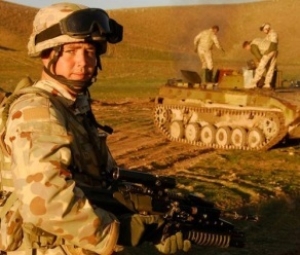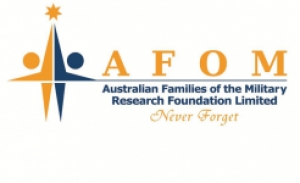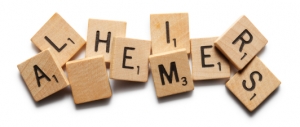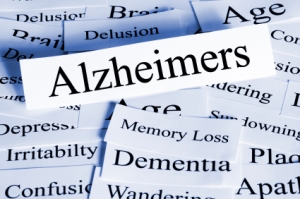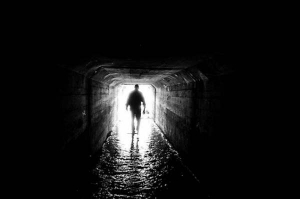Administrator
VIETNAM VETERANS TOGETHER!
PAUL Carpenter turned 21 years of age while training at Canungra for the Vietnam War.
He, like many around him, had been conscripted.
When his name came out in the draw, he was in shock. He didn’t want to go anywhere and was apprehensive.
“I didn’t like being told what to do,” he said reflecting on a period in his life that would have long lasting impacts.
It was back in 1968 and although that was 45 years ago, those memories come flooding back to Paul as if it was yesterday.
When he arrived at Saigon airport his life underwent a drastic change.
“It was crazy, all we could see was army personnel, fighter jets, holes in the tarmac and people with guns.”
He was an army engineer and he won’t admit it but probably had one of the most vulnerable roles in Vietnam at the time.
He says there was no-where in Vietnam that was completely safe but as a member of the land clearing team he spent most of his time ‘out bush’.
Veterans and their families.
Vietnam Vet Myths! - Article by Dr. Brian OToole from the ANZAC Institute
Vietnam Vet Myths
Subject: Dr Brian O’Toole from the ANZAC Institute
Dr Brian O’Toole from the ANZAC Institute is an epidemiologist with a long interest in the health of Vietnam veterans and the health consequences of war service. He has worked on the Australian ‘agent orange’ scientific studies, was a member for 18 years of the
NAC to the Minister for Vets affairs on the VVCS, and conducted the first cohort health study of any returned service group in Australia, the Vietnam Veterans Health Study. He has conducted this longitudinal study over two waves of assessments, 14 years apart, of a random sample of Vietnam veterans, making the study unique in Australia and one of only a few such studies worldwide. He has recently conducted a companion study of veterans’ wives, and is one of the few people in Australia with an expert knowledge of the long term effects of war service on veterans and their families. In this article he addresses some of the myths and legends.
Research can only report what is found; I can't make it up and can only report what I'm told by the diggers and the data that they give me. But there is some false knowledge out there which frequently prevails and pervades, such as claims of “20,000 veterans commit suicide” which are clearly nonsense and call into question the motives of the perpetrator, be it the editor or the journalist. What I'd like to do today is to address some of the more common myths and legends that surround Vietnam veterans and let you know what my research is showing. Here are 10 myths that I have encountered over the years that I would like to shed some light on, using the data from my research studies.
Myths and Legends About Vietnam Veterans
1. “It was safer in Vietnam than in Australia for the Nashos”
Only 1-in-16 young men who were called up actually got enlisted in the Army. From the 63,745 NSM who were enlisted in the eligible time period, 19,450 were sent to Vietnam. That’s 30.5%, less than a third. So even if you were called up, there was actually only a 1.9% chance that you would be sent to Vietnam.
During the conflict there were 215 deaths of NSM in Vietnam; the mortality rate of NSM veterans in Vietnam was about 1.1%, very similar to the Regular mortality rate and very similar to the overall American mortality rate. Australia’s contribution was exactly proportional. But during the war years there were 188 deaths of NSM in Australia, where most of the deaths occurred on the roads. This is a mortality rate of les than 0.3%. So the relative risk of death, if you were a Nasho and were sent to Vietnam, was 4 times higher than the risk if you were a Nasho who stayed at home. So it wasn’t safer in Vietnam at all, and there was no-one actually trying to kill you in Australia.
2. “”Only the ones dumb enough not to get out of it were sent”
The Army had a screening Psych test administered on enlistment called the AGC that basically measured intelligence. It was scaled, or “normed” on a general Regular population to have an average of 10.5 on a scale of 1-20. Several Army Officers have told me they “lifted the whole standard of the Army”. Indeed, the average AGC score of the Nasho veterans was 13.5, much higher than the background Regular Army population of 10.5. But, when compared with the Nasho veterans, the Regulars were not different; this means that the Regs who went to Vietnam were significantly brighter than the ones who stayed at home. Australia sent its best, fittest and brightest of both Regulars and Nasho’s to Vietnam and it’s more likely that the dumb ones stayed home.
3. “The Nasho had it easier than the Regs”
The study measured the potential for combat exposure in several different ways, from interviews with the diggers using an American questionnaire and from Army sources. Both showed that the average level of exposure was indeed slightly higher for Regs than for Nasho’s, but looking at the extent of the exposure showed that Regs and Nasho’s together had very similar risks of high intense combat, but that Nasho’s had slightly more who experienced low levels.
But it’s not just direct combat that hurts. When you look at the rate of Post Traumatic Stress Disorder (PTSD) and other mental disorders in Regs and Nasho’s, there is absolutely no difference. This means that you don’t need lots of direct combat or be a Regular enlistee to be vulnerable to PTSD and depression. Eight months in a war zone alone will do it for you, whether you were a Nasho or a Reg. Sometimes, it can only take one day.
4. “The blokes who came home by sea have less PTSD”.
This was a common myth heard around DVA and military senior ranks for some time; that a nice sea voyage home, fuelled by lots of beer, would leave PTSD behind, much like the line of cans that floated behind the Vung Tau Ferry on the return trip. Controversy raged and was fed by the image of men fighting in the jungle one day, and the next finding themselves discharged at the airport and alone late at night on the way home. But when I looked at the different rates of PTSD for those who came home by sea and by air, there was absolutely no difference. That doesn’t mean that the homecoming is not important – our research clearly shows it was important to veterans’ later adjustment, particularly in the weeks and months after RTA, when they were reluctant to talk about their experiences, bottling them up, hitting the deck when a car backfired, and then hitting the booze, in an atmosphere of government neglect and hysterical media opposition. From a humanist point of view, return to Australia by a leisurely means is surely a good thing for unit cohesion, for morale, and so forth, but it has no direct bearing on the issue of protective factors for PTSD and other conditions.
5. “Just get over it, son; it’ll get easier as you get older”.
Population evidence shows that the prevalence of most mental disorders actually reduces as people age – older people have better overall mental health, except for the dementing disorders, of course. The ages of 15-25 are dangerous for schizophrenia and the psychotic disorders, and the ages of 35-55 are dangerous for anxiety and depression, with the peak age of suicide in men occurring in their mid-50s. In my study, at Wave 1 the veterans were aged between 39 and 73, with an average age of 46, and at wave 2 the spread was 46 to 87, with an average age of 60. We would expect that the prevalence of psychological disorders would decrease with time, but that is not what was found. The veterans had many times higher rates of depression and anxiety than expected based on population figures. Although it is a rare condition, imagine rates of recurrent, severe, chronic depression at literally 40 times higher, not just 40% higher, than for the same age groups in the Australian population. And this is 3 decades after the war.
6. “You didn’t fight in a real war”.
How many Vietnam veterans heard this, just before they were chucked out of an RSL? It comes from the old view of what types of activity occur in a war that sees army upon army, as occurred in previous conflicts. American studies of World War II have shown that only about 15% of soldiers actually fired their weapon; in the American Civil War they found flintlock rifles on battlefields that had been muzzle-loaded up to 8 times but not fired, because of reluctance on the part of often very young combatants. Anecdotes about war often repeat the idea of “95% sheer boredom and 5% sheer terror” that often characterised former conflicts. But Vietnam was different. In Vietnam we found that less than one-quarter of the veterans did not fire their weapon, and 17% reported firing a dozen times or more. This alone distinguishes Vietnam from other conflicts.
Vietnam was a war without fronts, where non-combatants could easily become targets, where the friendly local by day could become a most unfriendly cat in black pyjamas by night, where you could get into trouble walking down the wrong alley in town. It was a conflict of counter insurgency, fought among a civilian population, all the time on TV. Where the military historian (Major) McNeill wrote that Vietnam placed Australian men into longer periods of risk of contact with the enemy than at any time in Australia’s history since Gallipoli.
Scientists are beginning to untangle the causes of PTSD and other war-related disorders by looking at the environmental assaults experienced by combatants. The obvious ones – direct combat, being wounded, etc – do not completely explain the rates of PTSD, particularly among non-combatants. This issue also arose with the Australian Gulf War study, conducted at the behest of DVA, that showed that about 15% of Gulf War veterans qualified for a diagnosis of PTSD, yet there was not a shot fired by or against the Aussies. Being trapped below the water line is a major fear for Navy personnel. The concept of “malevolent environment” is becoming heard these days, to describe non combat-related mental health conditions that can arise from just being present in a war zone.
It is probably impossible, or at least unsatisfactory, to try and compare wars – but you can extrapolate. From what we know about Vietnam and subsequent conflicts, the veterans of World War I, World War II, Korea, and other conflicts will have had similar rates of psychological problems as a result of their war service. We can extrapolate that the peacekeepers in nasty places like Rwanda would have similar rates of reactions to their experiences and require the same levels of support. The same goes for the Iraq and Afghanistan theatres, which certainly qualify for the soubriquet of “malevolent environments” and which can be expected to result in similar levels of psychological problems after RTA. All wars and conflicts are traumatic and nobody’s war is more traumatic or less traumatic than anyone else’s war; the same level of human suffering can be expected after any military conflict.
7. “Veterans have multiple unstable marriages”
This common myth is definitely not supported by our data: 79% of veterans had been married once only – compare this with up to 40% of Australian marriages ending up on the rocks. At the time of interviews, 3% had never married, 4% were separated, 3% were widowers, and 10.5% were divorced. When these are compared with Australian population (Bureau of Statistics) data, it shows that there is no essential difference between the marital status of veterans and the marital status of the population.
Moreover, the level of domestic violence is exactly the same among veterans as in the general Australian population. While about 25% of veterans admitted to marital punch-ups, this was almost exactly the same as my study a few years ago of domestic violence in the general community showed. Most of it was a single incident, mostly many years in the past. Veterans are not necessarily “walking time bombs”. But they can be challenging to live with, particularly if PTSD, depression and alcohol come into the picture.
The data shows that PTSD is in fact clearly linked to the risk of domestic violence, and men with PTSD have less marital satisfaction than men without PTSD, as do their wives. However, the average length of marriage was more than 31 years and, in spite of veterans’ struggles with alcohol and PTSD, their wives ‘hang in there’. Even despite differences between PTSD veterans and non-PTSD veterans, their wives’ measures of marital satisfaction do not fall within the so-called ‘clinical range’, which means they are within ‘normal’ limits when it comes to marital adjustment.
8. “They would have been like that anyway”.
This is one of the most insidious, arrogant and destructive myths that I have heard expressed around DVA and Defence. From our paper that examined the risk factors for PTSD (that was published in 1998), we took information from different time periods – at school, between school and the Army, in the Army before going to Vietnam, and in Vietnam. We tested 100’s of items. We asked veterans if their father was in the military in World War II, in combat, and whether he was affected by his service. Interestingly, father being affected by his WWII service came up as a predictor of PTSD, so much so that I had a long exchange with a journal editor and an anonymous journal referee who wanted to emphasise the possible genetic influences on PTSD. Our psychiatric assessments showed that a few veterans had symptoms of depression and agoraphobia before going to Vietnam. And there was some association between having depression and agoraphobia before going overseas and later development of PTSD. So it seems the myth may be correct. But we are talking very small amounts, although statistically significant.
The in-Vietnam variables that were the most strongly predictive of PTSD were: corps group, being wounded, and the amount of combat trauma experienced. These items swamped the other variables. Corps group in particular is interesting: the highest rates of PTSD found in the study were among RAE. This is in spite of their having lower mortality rates in Vietnam and having generally lower scores on the various combat measures we used. This suggests that their role is inherently dangerous – that’s a bit bleedin’ obvious, for a bomb and mine disposal team – and that direct enemy attack and combat is not the full story about PTSD, particularly for non-combatants. There is some small indication that there may be predisposing risk factors for PTSD, but without the experiences of Vietnam and combat, they would not have been like that anyway. The threats faced by Field Engineers would certainly qualify as a “malevolent environment”.
9. “Veterans biggest problem is PTSD”.
No, the veterans’ biggest problem is not PTSD. In wave 1 we found PTSD to have occurred in 20% of veterans and it was current (i.e. symptoms in the past month) to the level of 10%. But alcohol abuse and dependence were much more prevalent – in wave 1 it was approximately 47% of veterans with alcohol disorders, more than double the PTSD rate. In wave 2 we found PTSD had increased to about 25%, while alcohol disorders had come down to about 28%, but they were still the highest prevalence of the psychological disorders and were many times more prevalent than the background Australian population. High cholesterol, hypertension, deafness, haemorrhoids, osteoarthritis, gout and back pain were all at much higher prevalence’s than PTSD, as was general anxiety disorder. The good news is that, in spite of the Army teaching men to drink and smoke, the current smoking rates of veterans were no different from the general population, but there were far more ex-smokers than the population, so this tells me that veterans have often heard the health message about smoking and given up.
10. “We don’t have to worry about the wives until they become widows”.
It seems important to governments to gather data about veterans, and so it should be, but veterans don’t exist in a vacuum; most have wives and children who might be at risk of “ripple effects” of their veteran’s service. In our study of veterans’ wives and partners, we found that the partners of veterans are not just struggling with their impaired partner but are suffering elevated rates of serious psychiatric illness, especially severe, recurrent depression, even 3 decades after the war.
A statistical analysis of factors associated with wives’ depression showed that veteran combat, PTSD and ongoing depression were clear and strong risk factors. That is, aspects of veterans’ war service seem directly predictive of their partners’ rates of depression. There is also a disparity between the wives’ rates of psychiatric disorder and their rates of healthcare utilization. In particular, wives who have veterans with PTSD have lower rates of health service utilisation than other wives. This suggests that greater attention is needed to ensuring adequate assessment and treatment of veterans partners, particularly if the veteran has PTSD.
Concluding Remarks:
Our results reinforce the need to continue surveillance of veteran health and to take into consideration the impact of war service and combat exposure on veterans’ intimate partners when future studies of veterans are undertaken. Higher rates of mental ill-health in both veterans and their partners may have major implications for the mental health of their offspring.
The ANZAC Institute is pressing ahead with plans for a study of the veterans’ children – to get whole families into the study would be a unique resource to study the long term effects of war service on veterans and their families and to pinpoint ways in which interventions might be put in place in a timely way to head off the problems that I am now seeing in the veterans of Vietnam and their wives. I would urge you to get behind this effort and tell governments and possible sponsors that studies of this nature are not just political exercises to assuage the cries of the strident masses, but have the potential, not just for saving money in compensation, but for improvement of the lives of the men and women who serve their country as part of Australia’s defence commitments.
Diggers cancer cluster claim
Joseph Catanzaro, The West AustralianUpdated August 3, 2013, 2:50 am
A device used by Australian soldiers in Afghanistan to jam the detonation of roadside bombs has been linked to a cluster of cancer among returning Diggers, with internal documents revealing the Federal Government was aware of alleged problems as early as 2008.
A beautiful video clip by Beautifully Mad, the concept of reversing war and its effects.
A beautiful video clip by Beautifully Mad, the concept of reversing war and its effects. BRILLIANT.
Click the link to view clip
>http://www.youtube.com/watch?v=yqCaSycvDLk&feature=youtu.be
When a Loved One Has Alzheimers Disease
Could It Be Alzheimer's?
It's normal for our loved ones to become a bit forgetful as they age. So how can we separate a harmless "senior moment" from a more serious problem like Alzheimer's disease? One in eight people 65 and older have this devastating form of dementia. In its first stages, Alzheimer's may not be obvious to friends and family. But there are some early warning signs to watch for.
Memory Worries May Be Early Sign of Alzheimer's
Although studies didn't prove connection, expert says concerns are worth mentioning to a doctor
WebMD News from HealthDay
By Amy Norton
HealthDay Reporter
Caring for your joints at home. WebMD
Caring for Your Joints at Home
WebMD Feature
Reviewed By Michael W. Smith, MD
Just as the tread on your tires wears away over time, the cartilage that cushions your joints can wear away, too, in a condition known as osteoarthritis. And without enough cushioning, the bones of a joint will hurt when they rub against each other.
Frayed cartilage can't heal or grow back. "There's no way to reverse the arthritis once it has started," says Michaela M. Schneiderbauer, MD, an orthopedic surgeon at the University of Miami Miller School of Medicine. But there are ways to reduce the pain and protect the cartilage you still have. Use these tips to slow the damage.
Understanding and Fostering Resilience in Persons Exposed to Trauma from Dr Rod Bain
Substance Abuse Treatment for Children and Adolescents - Questions you should be asking...
HEALTH UPDATE FROM DR ROD BAIN.
PDF Link: Substance Abuse Treatment For Children & Adolescents - Questions you should be asking



